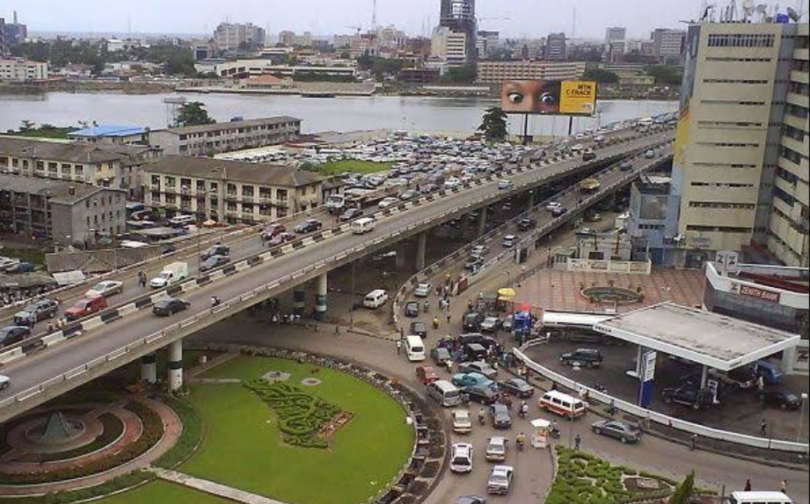The cost of living in Nigeria continues to rise, with March 2024 Consumer Price Index (CPI) data showing a consistent increase in inflation rates across both all items and food, affecting the daily lives of people in states, as evidenced by the data from the top 10 most expensive states.
The latest report from the National Bureau of Statistics (NBS) has put the nation’s inflation rate at an almost all-time high of 33.2% in March 2024, underscoring the severe economic pressures reshaping the cost of living across the country. This inflationary pressure is not evenly distributed, with its impact varying significantly across different subnational regions.
Below is a list of the 10 most expensive states in Nigeria to live in March 2024:
Leaving its spot as the sixth most expensive state to live in Nigeria in February 2024, Osun settled at the 10th position on the list in March 2024. For this state, March 2024 saw a significant increase in all-item inflation to 35.44%, up from February’s 34.39%. Food inflation also rose sharply to 43.55% in March from 41.88% the previous month.
The all-items inflation rate rose by 1.05%-points month-on-month, indicating an acceleration in the general price level. The food inflation rate outpaced the general trend, climbing by 1.67%-points, signalling a heightened pressure on food costs that significantly affect household budgets.
Ondo State maintained its ninth position, although the all-item inflation rate increased to 35.81% in March, from 33.96% in February. There was a slight uptick in food inflation from February’s 41.42% to March’s 43.45%.
A marginal increase of 1.85%-points in the all-items inflation rate suggests a consistent upward pressure on costs. Food prices showed a moderate rise, with a 2.03%-point increase in food inflation, reflecting challenges in the food supply chain or possible increases in demand.
Abia State maintained its eighth position, as all-item inflation saw an increase to 36.09% in March compared to 34.12% in February. Food inflation rate jumped to 44.47% in March from February’s 41.04%.
Witnessing a 1.97%-point increase in the all-items rate suggests a sharp rise in the overall cost of goods and services. The 3.43%-point jump in food inflation is particularly noteworthy, underscoring a more pronounced escalation in the cost of food relative to the overall index.
Leaving its spot as the 10th most expensive state to live in Nigeria in February 2024, Akwa Ibom State rose to the seventh position on the list in March 2024. March recorded an all-item inflation rate of 36.13%, rising from February’s 33.94%. The state experienced a notable increase in food inflation, reaching 45.18% in March from 41.44% in February.
The state experienced a 2.19%-point surge in all-items inflation, with food inflation leaping by 3.74%-points. This pronounced hike in food inflation could be attributable to localized factors impacting food production or distribution.
From its seventh position in February 2024, Ebonyi State took a step forward to the sixth position on the list in March 2024. There was an increase in all-item inflation rate to 36.57% in March from 34.28% in February. Food inflation was 44.10% in March, which is higher than February’s 41.63%.
With a 2.29%-point increase in the all-items inflation rate, the state sees a significant climb. Food inflation follows suit with a 2.47%-point rise, which could reflect constraints in agricultural outputs or increased food import costs
Maintaining the fifth spot on the list for the second time is Rivers State, as March’s all-item inflation rate climbed to 37.20%, up from 35.42% in February. Food inflation also increased to 45.08% in March, compared to 44.34% in February.
A 1.78%-point uptick in all-items inflation coupled with a 0.745-point rise in food inflation indicates a general inflationary environment, though the less steep increase in food prices might point to slightly better food market conditions compared to the overall economic climate.
Leaving its spot as the second most expensive state in Nigeria in February 2024, Oyo State settled at the fourth position on the list in March 2024. The state saw a rise in the all-item inflation rate to 37.30% in March, up from 36.60% in February. Food inflation saw a slight increase to 41.83% in March from 40.30% the month before.
The all-items inflation increase by 0.70%-points is noteworthy but not as severe as other states, hinting at a possibly more stable economic environment. Food inflation rose by 1.53%-points, suggesting food prices are a key contributor to the overall inflationary pressure.
From its fourth position in February 2024, Kwara State took a step forward to the third position on the list in March 2024. In March, all-item inflation rose to 38.10% from 35.50% in February. The state also saw a significant rise in food inflation to 46.18% in March, up from February’s 43.05%.
A 2.60%-point rise in the all-items inflation rate signals a significant cost uptick. Food inflation soared by 3.13%-points, one of the higher jumps observed, which may be indicative of more severe local disruptions or price pressures in food items.
Another state taking a step forward on the list is Bauchi State, moving from the third most expensive state to live in Nigeria to the second.
The all-item inflation rate for March was 38.34%, a bit higher than February’s 35.62%. Interestingly, food inflation was much lower at 34.38% in March compared to 31.46% in February, suggesting a more complex economic situation.
The state shows an unusual pattern with a moderate 2.72%-point increase in the all-items rate but a lesser increase of 2.92%-points in food inflation. This trend could be interpreted as an anomaly or may indicate the presence of specific factors buffering food costs relative to other expenses.
As usual, Kogi State had the highest all-item inflation rate in March at 39.95%, up from 37.98% in February. Food inflation also peaked at 48.47% in March, significantly higher than February’s 46.32%.
Standing out with the highest month-on-month increase in both categories, this state recorded a 1.97%-point rise in the all-items rate and a significant 2.15%-point increase in food inflation. These figures suggest a heightened economic strain, with food prices leading the inflationary thrust, which could be symptomatic of both supply-side constraints and escalating demand pressures.







